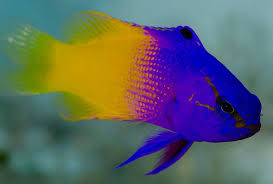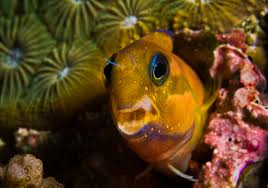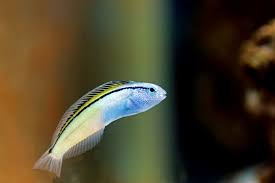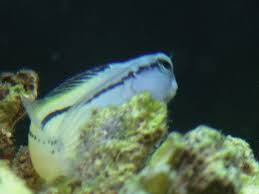
Cosplay, short for “costume play,” has become an integral part of modern pop culture. This vibrant subculture involves fans and enthusiasts dressing up as characters from a variety of media, including anime, video games, comics, movies, and even historical figures. One of the most enduring and captivating symbols within cosplay culture is the dragon. In this article, we will explore the fascinating role of the dragon in cosplay, examining how this mythical creature has influenced the designs, performances, and cultural significance of cosplayers worldwide.
1. The Enduring Power of the Dragon in Mythology
Before delving into the realm of cosplay, it is essential to understand the cultural and mythical roots of the dragon. The dragon is one of the oldest and most powerful symbols found in global mythology, appearing in numerous cultures across the world, from ancient civilizations in Asia and Europe to indigenous cultures in the Americas and Africa.
In Chinese mythology, the dragon represents power, strength, and good fortune. It is often depicted as a benevolent creature that controls water, weather, and fertility. Similarly, in European mythology, dragons are often seen as dangerous, fearsome creatures, representing chaos and destruction, but also holding a certain mystique and power.
Dragons are commonly associated with fantasy genres, whether in ancient myths or modern-day literature and media. As such, the dragon has become a popular subject in cosplay, where individuals channel its awe-inspiring presence to express their creativity and engage with their favorite stories.
2. The Dragon’s Role in Fantasy and Popular Culture
The significance of the dragon in popular culture, particularly in fantasy settings, is undeniable. From literature to video games and anime, dragons have played crucial roles as both antagonists and allies. They are often portrayed as powerful, wise, or mysterious beings that challenge the heroes or assist them in their quests.
Dragons in Literature and Media:
One of the most iconic dragons in literature is J.R.R. Tolkien’s Smaug from “The Hobbit.” Smaug is a fearsome dragon who hoards treasure, creating a complex and captivating character in the narrative. Tolkien’s dragon represents greed, power, and menace but also a deep wisdom and ancient presence that can be explored further through the interactions between characters.
In more recent media, dragons have continued to capture audiences’ imaginations, with one of the most notable examples being Game of Thrones and the depiction of Daenerys Targaryen’s dragons. These dragons are both mighty and symbolic of the main character’s growth and journey, showcasing the versatility of dragons as symbols of strength, freedom, and transformation. The dragons in this series embody the complex emotions of their characters, bridging the gap between fantastical creatures and human struggle.
In anime and manga, dragons also appear frequently, whether as mythical creatures, transformed characters, or representations of supernatural powers. Popular anime series like Dragon Ball, Fairy Tail, and One Piece feature dragons as essential parts of their narratives, making them not only powerful symbols but also key components of the storylines themselves. For instance, in Dragon Ball Z, Shenron, the wish-granting dragon, is a crucial figure that embodies the potential of wishes, power, and transformation, all of which are themes that resonate deeply with cosplay culture.
3. Dragon Cosplay: A Celebration of Myth and Fantasy
Dragons have found a natural home in cosplay culture, where individuals embody characters from their favorite media. Cosplayers often draw inspiration from dragons, using their awe-inspiring imagery and symbolism to create elaborate costumes that reflect the dragon’s power, mystique, and beauty. The allure of dragons in cosplay is not just about dressing up as a creature; it’s about embracing their essence and representing their role within the world of fantasy.
Designing Dragon Costumes:
Dragon cosplay is often one of the most intricate and awe-inspiring categories in cosplay competitions. Creating a dragon-inspired costume involves numerous elements, from sculpting dragon scales to designing wings, tails, horns, and intricate armor. Cosplayers draw from various sources, using materials like foam, latex, fabric, and wire to build detailed dragon elements that breathe life into their characters.
The choice of color, texture, and size is significant, as dragons in cosplay are often portrayed in striking, vibrant colors. Gold, red, blue, green, and black are popular hues associated with dragons, reflecting both the elemental powers they command and the vast variety of dragon representations in different mythologies and fantasy worlds.
Wings are a key component of many dragon costumes, often designed to appear massive and dramatic. Some cosplayers even incorporate mechanical elements, creating wings that can move or retract, further enhancing the realism of the costume. Tail design also plays a prominent role, with long, scaled tails that curve and shift to evoke the fluid, serpentine nature of the dragon.
Dragon Makeup and Prosthetics:
To further embody the dragon spirit, many cosplayers use makeup and prosthetics to alter their appearance. Special effects makeup is used to create scales, glowing eyes, or even the illusion of scales on the skin. Prosthetic pieces, such as horns, fangs, or extended ears, can be added to complete the look, allowing cosplayers to resemble dragon-like creatures more convincingly.
The use of body paint and intricate face designs can also bring a touch of mysticism and magic, transforming the cosplayer into a fully realized dragon. For example, dragon eyes—often glowing or reptilian—are frequently a focal point of these characters, symbolizing the magical essence and all-seeing power of dragons.
Cultural Influences on Dragon Cosplay:
Different cultural interpretations of dragons influence how cosplayers approach their designs. In Chinese dragon cosplay, for example, the design is often more serpentine and elongated, reflecting the dragon’s association with water and the heavens. The costumes might incorporate traditional Chinese elements, such as intricate gold embroidery, flowing robes, and symbols of prosperity and good fortune.
In Western dragon cosplay, the emphasis may be on fierceness and strength, with costumes resembling the sharp, armored, and fearsome dragons of European myths. These dragons often have more angular, armored features, with larger wingspans and a more intimidating, destructive aura.
4. The Appeal of Dragon Cosplay at Conventions and Competitions
Dragon cosplay has a particular appeal at conventions and competitions, where cosplayers from around the world come together to showcase their talent and creativity. These events often have specific categories for fantasy-based costumes, and dragon-themed entries are among the most popular and spectacular.
The Impact of Dragon Cosplay on Convention Culture:
Conventions such as Comic-Con, Anime Expo, and Dragon Con have become the epicenter for dragon cosplay, where thousands of fans gather to admire and showcase their costumes. Cosplayers donning dragon-inspired attire often stand out due to the sheer scale and complexity of their designs. These costumes tend to draw large crowds and elicit awe, as the dragon represents an idealized form of power and fantasy.
In cosplay competitions, judges look for not only the technical skill behind the costume creation but also the cosplayer’s ability to embody the character. Dragon cosplayers are expected to act out the role of their characters, whether through regal poses, powerful gestures, or dynamic performances. The goal is not just to look like a dragon but to perform as if they were one, channeling the mythical power that dragons represent.
Community and Collaboration in Dragon Cosplay:
Dragon cosplay also brings people together in a spirit of community and collaboration. Many cosplayers who share an affinity for dragons will form groups, working together to create themed dragon squads. These groups may incorporate different types of dragons—each cosplayer representing a different dragon from various cultural mythologies, such as Chinese, Western, or even hybrid dragons.
These group cosplays foster a sense of belonging and mutual appreciation, as fans unite over shared interests. Through collaboration, cosplayers can create even more complex and dramatic dragon-themed presentations, adding layers of creativity and artistry to their costumes and performances.
5. The Symbolism of Dragons in Cosplay
In the world of cosplay, the dragon symbolizes much more than just a powerful creature. It represents a wide array of themes, such as:
- Transformation and Growth: Dragons are often depicted as beings that undergo transformations, from humble beginnings to majestic, all-powerful creatures. Cosplaying as a dragon can symbolize personal growth and the power of transformation within the cosplay community.
- Strength and Power: The dragon is a symbol of immense strength and resilience. Cosplayers who choose to dress as dragons may feel empowered, drawing on the creature’s qualities of courage, dominance, and wisdom.
- Mysticism and Magic: Dragons are often associated with magic, ancient wisdom, and mystical forces. In cosplay, dragons can embody these elements, creating a sense of mystery and wonder that draws fans to the subculture.
- Unity and Diversity: The dragon is a universal symbol that transcends borders and cultures, making it an ideal subject for cosplay. It brings together people from different backgrounds, uniting them in their shared love for fantasy and creativity.
6. Conclusion: The Enduring Legacy of Dragon Cosplay
Dragons continue to captivate and inspire the world of cosplay, where they are portrayed as both fierce warriors and benevolent guardians, embodying power, grace, and mysticism. Whether through traditional Chinese dragons or Western interpretations, cosplay enthusiasts across the globe draw upon the dragon’s rich mythology to express their creativity, passion, and love for fantasy.
As cosplay culture evolves and grows, the dragon will undoubtedly remain a central figure, symbolizing the ongoing transformation and imagination of those who choose to wear its skin. With its roots deeply embedded in mythology and its wings spread wide in modern pop culture, the dragon will continue to inspire cosplayers for generations to come.









